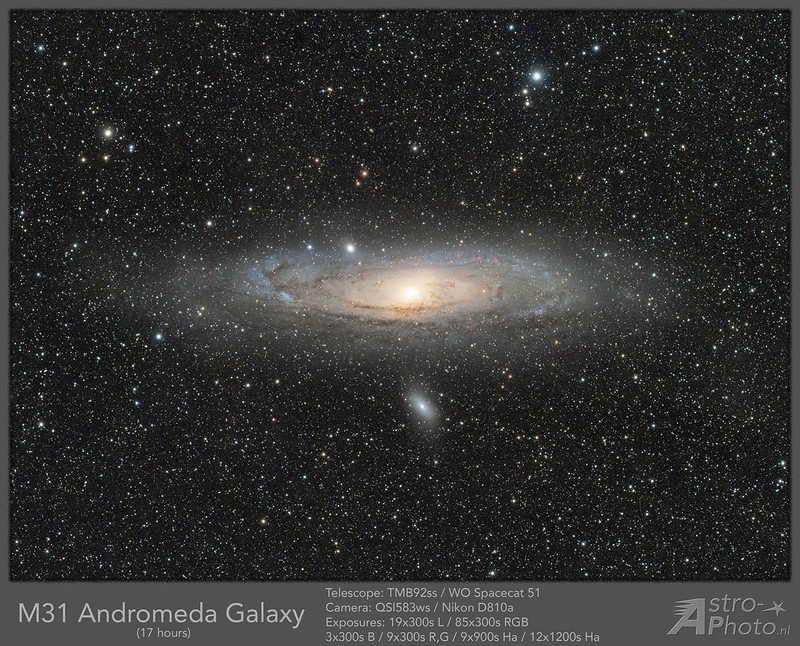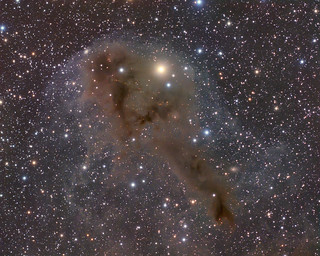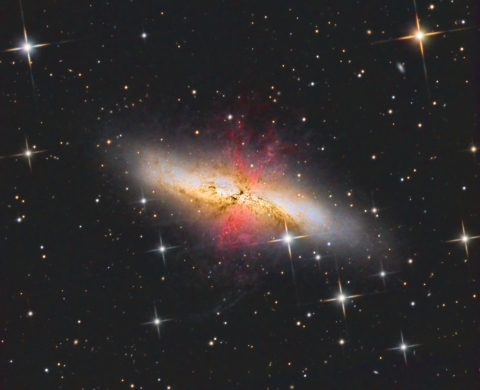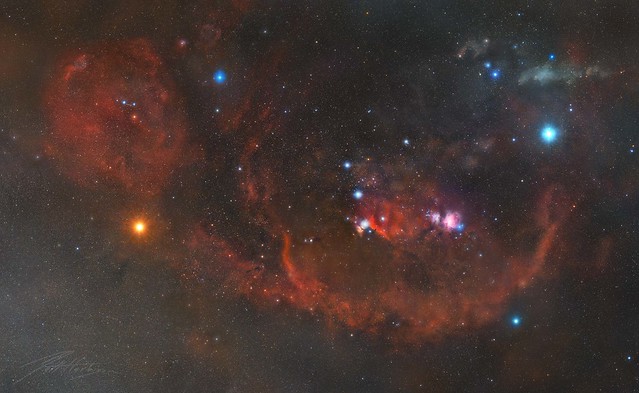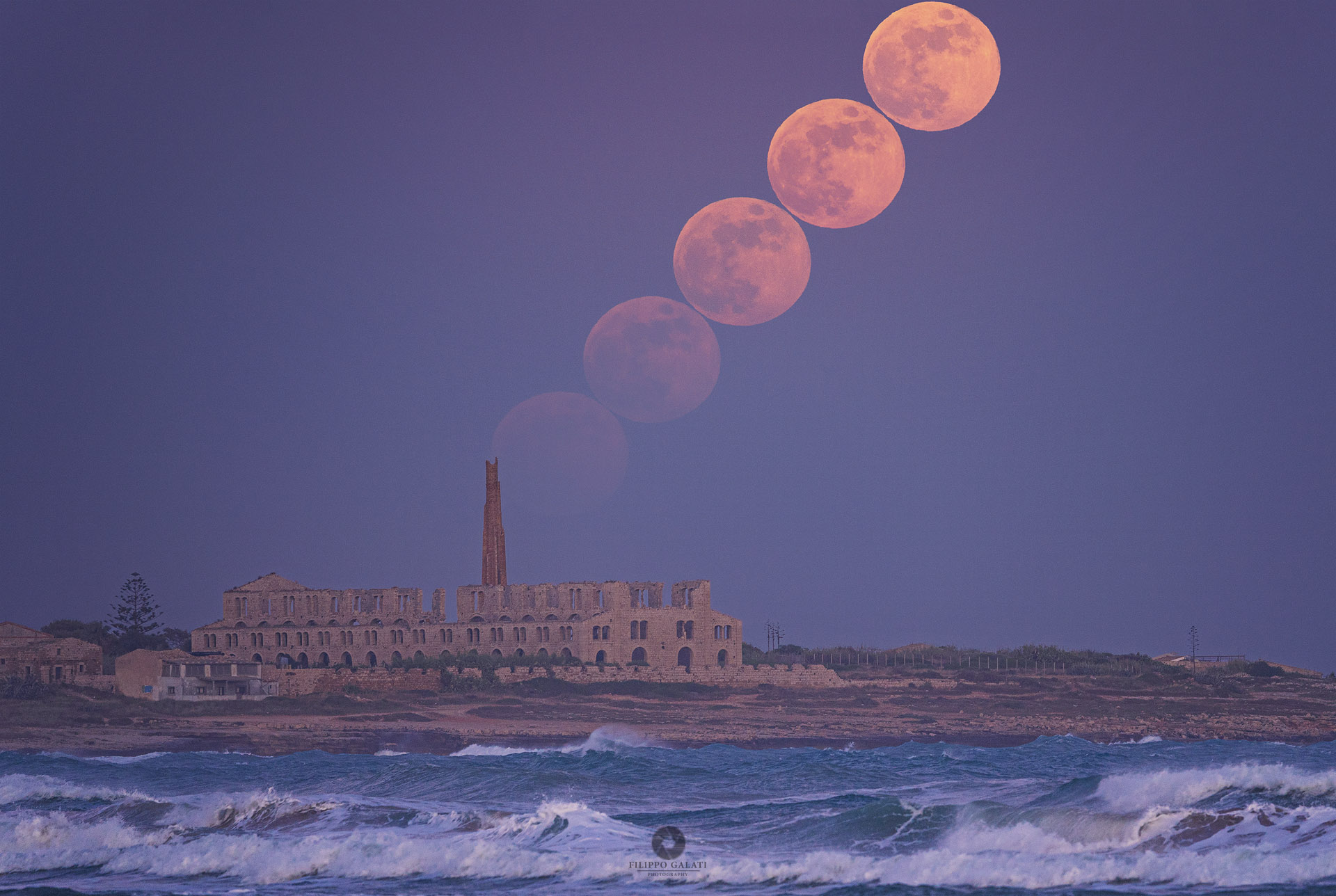Starburst Galaxy IC10.
KG Observatory, Julian, CA
My second project with the new ZWO ASI6200M Pro – this time with 2x2 binning for smaller sub size (30 MB vs 120 MB) and higher SNR. The 2X loss of resolutions is not really noticeable. (-:
Camera gain was fixed at 100 with 60s Luminance subs and 300s RGB and Ha subs. Several hours of luminance subs were discarded in favor of the best FWHM.
Ha was applies over the LRGB with a starless screened overlay to help highlight the vigorous star-forming regions.
Fortunately the great positioning of IC10 allowed me to capture lots of subs – 9 hours per day from 8:30 PM to 5:30 AM over 3 days. Before that we had 8 days of high-altitude smoke from the CA fires. Skies were very dark, but just a handful of visible stars.
"Lurking behind dust and stars near the plane of our Milky Way Galaxy, IC 10 is a mere 2.3 million light-years distant.
Even though its light is dimmed by intervening dust, the irregular dwarf galaxy still shows off vigorous star-forming regions that shine with a telltale reddish glow.
IC 10 is the closest known starburst galaxy. Compared to other Local Group galaxies, IC 10 has a large population of newly formed stars that are massive and intrinsically very bright, including a luminous X-ray binary star system thought to contain a black hole.
Located within the boundaries of the northern constellation Cassiopeia, IC 10 is about 5,000 light-years across."
https://www.astrobin.com/jq2i75/



